Meston's 'Wild Australia' Show 1892-1893
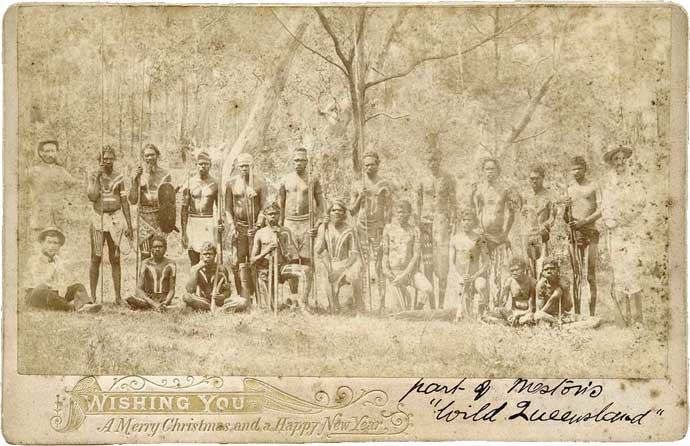
CLICK IMAGE TO ENLARGE
Postcard Brisbane 1892 of Meston's Wild Queensland
(Photo by Will Stark, Brisbane 1892 - Macleay Museum
A little before 1892, Archibald Meston who later became the Southern Protector of Aboriginals for Queensland rounded up 27 First Nations people from Wakaya, Kuthant, Kurtjar, Arapa, Walangama, Mayikulan, Kabi Kabi, Kalkadoon and Muralag. There were 22 men, four women and one child.
He called his prisoners the 'Wild Australia' show and carted them down the east coast of Australia until he ran out of funds and deserted them in Melbourne.

Group photo (Photographer: Charles Kerry, courtesy UQ Anthropology Museum Collection)
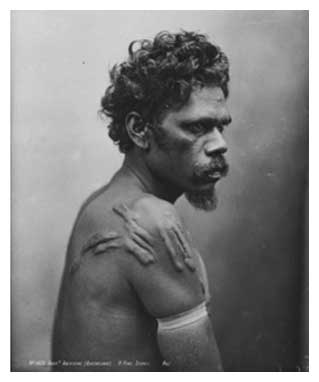
Member of the 'Troupe', Yungkwa
Photographer: Charles Kerry,
(University of Queensland)
In 1892 and 1893 a 'troupe' of Aboriginal and Torres Strait Island 'performers' was taken to Brisbane, Sydney and Melbourne to stage what was known as the 'Wild Australia' Show. The project was conceived and promoted by a Queensland journalist entrepreneur, Archibald Meston, who conscripted a junior partner, Brabazon Purcell as the manager of the 'troupe'.
Members of the 'troupe' were photographed by Charles Kerry when they arrived in Sydney, by John William Lindt in Melbourne and on their return to Sydney by Henry King, the three most famous Australian photographers of that time.
Meston intended on using the proceeds of the shows to travel the group to the United Kingdom, Europe and America, but he ran out of funds and deserted the group in Melbourne. It was another six months before the Wild Australia performers could return to Queensland.
Photographs of the performers circulated in various forms, printed in magazines and even stationery, for over a century.
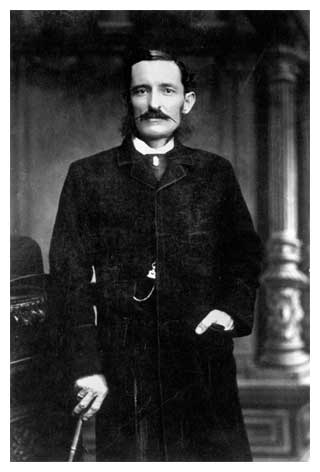
Archibald Meston (1851-1924)
for Rosewood, Journalist, Entrepreneur and the Protector of Aboriginals for southern Queensland
This exhibition explores a brief period in the life of Archibald Meston, one of the most influential and controversial figures in Queensland Indigenous history.
Meston attempted to portray a group of Aboriginal and Torres Strait Island people as "primitive savages" and marketed them as untouched by European influences.
He attempted to profit financially from these performers and even though this ambitious plan soon failed, he continued to promote himself over the next decade as an expert in regard to Aboriginal people.
Following this failed business venture Meston managed to position himself as one of the most influential advisers to the Queensland Government on Aboriginal issues and was very influential in the introduction of Queensland's first Aboriginal protection policy that was introduced in 1897. Meston was, from 1898 to 1903, the Southern Protector of Aboriginals for Queensland.
After a long and varied career, Meston retired to Brisbane where he died (a pauper) of tetanus on 11 March 1924 and was buried in South Brisbane Cemetery.
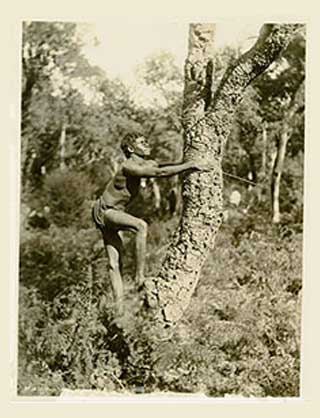
Photograph by Henry King. (Fryer Library)
|
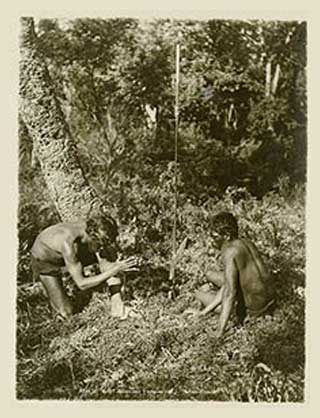
Photograph by Henry King. (Fryer Library)
|

(Courtesy Queensland Museum)
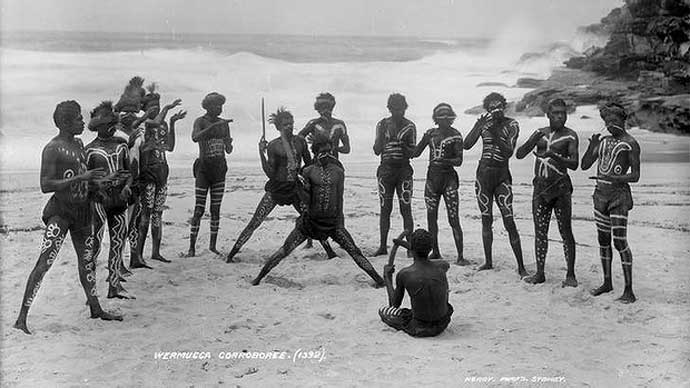
(Photo by Charles Kerry; University of Queensland Anthropology Museum Collection)
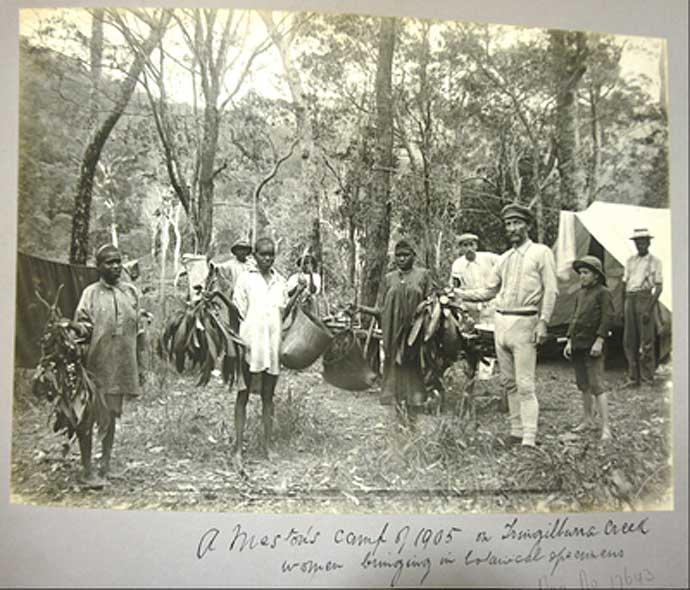
(John Oxley Library, API-3)
Source: Wikipedia
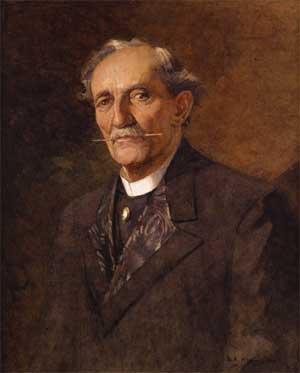
Archibald Meston 1864 1937
(Painting in 1921 by B. E. Minns)
Archibald Meston was born at Towie, Aberdeenshire, Scotland, the son of Alexander Meston and migrated with his parents to Sydney in 1859, his family subsequently taking up farming at Ulmarra, New South Wales on the Clarence River.
In January 1889 Meston led a government expedition to the Bellenden Ker Range and explored its summit.
In 1894 he was commissioned to investigate the conditions of Aboriginals in Queensland; despite his consequent proposals, little of his ideas were embodied in the Aboriginal Protection and Restrictions of the Sale of Opium Act 1897. Meston was, from 1898 to 1903, the Southern Protector of Aboriginals for Queensland.
In 1910 he was appointed director of the Queensland Government Tourist Bureau in Sydney. Throughout his life he was a prolific writer and, in addition to the newspapers he edited, he published frequently in The Queenslander, The Brisbane Courier and many other papers.
Archibald Meston is commemorated in the names of two plants collected by him on Bellenden Ker, Garcinia mestonii and Piper mestonii.
Meston Street in Mitchelton, Brisbane was named after him in 1938.
In 1936, a portrait of Archibald Meston (pictured right), was painted by artist and friend B.E. Minns, it was purchased through public subscription and donated to the Queensland National Art Gallery (now the Queensland Art Gallery).
2015 EXHIBITION
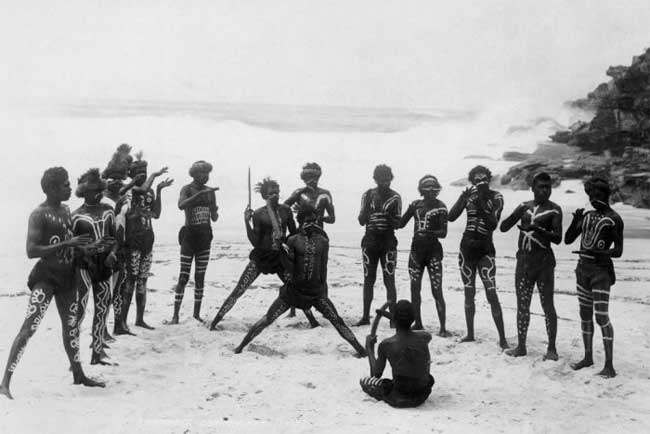
(Image: Bondi Beach, December 1892 - Photo by Charles Kerry; University of Queensland)
Meston's 'Wild Australia' Show 1892-1893
Curated by Michael Aird and Mandana Mapar
University of Queensland
Anthropology Museum
Opened on 23 February 2015
A little before 1892, a group of 27 Indigenous people were brought together from the Wakaya, Kuthant, Kurtjar, Arapa, Walangama, Mayikulan, Kabi Kabi, Kalkadoon and Muralag peoples. There were 22 men, four women and one child. The man behind it was Archibald Meston and he named the group 'Wild Australia'.
The plan was to take them around the world as a 'troupe', and that may have succeeded had it not been for accusations that the performers were held in chains, along with financial scandals.
The information was gathererd as a result of over 30 years research by Aboriginal Environments Research Centre Director Professor Paul Memmott, University of Queensland and Michael Aird, Senior Curator of Queensland Museum.
They gathered a collection of photos taken of these 27 individuals by leading studio photographers of the day. And together they form the basis of an exhibition theyn named 'Meston's 'Wild Australia' Show 1892-1893. The exhibition was aimed at reconnecting families to their descendants.
"The exhibition, which takes the same title of Archibald Meston's show of more than 120 years ago - Wild Australia - gives human dignity to the names and faces of the people in the photographs," Michael Aird explains. "Their strength of spirit and determination are evident in the gazes of the portrait subjects."
Dr Diana Young, UQ Anthropology Museum Director, who commissioned the exhibition as an important contribution to Australian history said, "As a visitor, you have the opportunity to engage with the presence of each person and create a kind of intimacy across time and space, though sometimes this may be discomforting".
The main feature of the exhibition was a selection of photographs taken by Charles Kerry and Henry King of the Wild Australia performers in 1892 and 1893, which are held in the UQ Anthropology Museum Collection. (These original photos were purchased by Museum founder Dr L.P. Winterbotham in the 1950s from Tyrell's Bookshop in Sydney).
Other photographs taken by J.W. Lindt in 1893 held by the British Museum will also feature, as well as photographs from UQ's Fryer Library, Queensland Museum, the State Library of Queensland, the Macleay Museum, the State Library of NSW, the State Library of Victoria and the Pitt Rivers Museum.
A research project initiated by Paul Memmott, Aboriginal Environments Research Centre, University of Queensland
Exhibition curation Michael Aird and Mandana Mapar
Curatorial research Paul Memmott

